How to Improve your CLTV – Actionable Strategies for eCommerce Businesses

In today’s dynamic e-commerce world, brands are slowly shifting their focus from customer acquisition. Retention is now taking the lead role, becoming increasingly crucial in an industry where competition is relentless. This shift in focus highlights the significance of Customer Lifetime Value (CLTV) as a vital metric.
CLTV goes beyond mere sales figures; it’s a comprehensive measure of a brand’s success in maintaining long-term customer relationships. In essence, CLTV embodies the art of not just winning customers but, more importantly, keeping them – a true testament to a brand’s endurance and appeal in the competitive e-commerce landscape.
8 Actionable Strategies to Increase CLTV in eCommerce
eCommerce businesses have distinct customer bases with varying preferences, making it crucial to explore diverse strategies for increasing customer engagement. Here are some proven approaches to boost Customer Lifetime Value in e-commerce.
1. Implement a Robust Loyalty Program
A well-crafted loyalty program is one of the most enticing ways to boost Customer Lifetime Value (CLTV) in e-commerce. It’s a strategy that goes beyond transactional relationships, transforming each purchase into an opportunity for deeper engagement. By offering rewards, points, or exclusive discounts, you not only incentivize repeat purchases but also foster a sense of belonging and appreciation among your customers.
Statistics show that increasing customer retention rates by just 5% can boost profits by 25% to 95%. A loyalty program rewards repeat business, encouraging customers to continue shopping with your brand.
For instance, Sephora’s Beauty Insider program offers points for purchases, leading to discounts, gifts, and exclusive experiences. It’s a model of how loyalty programs can enhance CLTV by making customers feel valued and incentivized to return.

The success of a loyalty program hinges on its ability to resonate with your customer base. It should feel like a natural extension of your brand’s identity. Customization is key – from the ewards offered to the way points are accumulated and redeemed. The program should align with your brand’s values and appeal to your customers’ preferences and behaviors.
Consider integrating various elements that add value for the customer. For example, exclusive early access to new products or special events can make members feel privileged. Additionally, tiered rewards systems, where customers unlock new benefits as they reach higher levels of spending, can create a sense of progression and achievement.
2. Offer Exclusive Membership Benefits
Elevating Customer Lifetime Value (CLTV) in e-commerce hinges on not just attracting customers but also keeping them engaged long-term. This is where offering exclusive membership benefits shines.
A research conducted by McKinsey reveals that members of loyalty programs are 59% more likely to choose the brand over competitors. By allowing customers to subscribe to products or services, you assure repeat business and cement brand loyalty.
To make your membership program effective and appealing, incorporate elements such as recurring orders, dynamic pricing, and exclusive perks. For example, Amazon Prime’s success lies in its mix of free shipping, streaming services, and early access to deals, contributing to members spending, on average, about $1,400 per year, compared to $600 by non-members.
The action point here is clear: design a membership program that is both flexible and rich in value. Offer benefits that are not just transactional but enhance the overall customer experience, like special discounts, members-only content, or early product releases. Ensure the program is user-friendly, allowing members to easily sign up, modify, and manage their subscriptions. By doing so, you not only boost your CLTV but also build a loyal community around your brand.
3. Introduce Subscription Services
Integrating subscription services into your e-commerce model is a proven method to boost Customer Lifetime Value (CLTV). With the global subscription e-commerce market growing rapidly, expected to reach $478.2 billion by 2025, this strategy offers a consistent revenue stream while enhancing customer loyalty. Subscriptions encourage repeat business by providing a convenient and predictable shopping experience.
To effectively implement this, focus on creating subscription options that offer real value to your customers. This could be in the form of regular deliveries of consumables, exclusive access to products, or special pricing for subscribers.
For example, Dollar Shave Club revolutionized the grooming industry by offering a simple subscription model for razors and personal care products, significantly increasing its customer retention and CLTV.
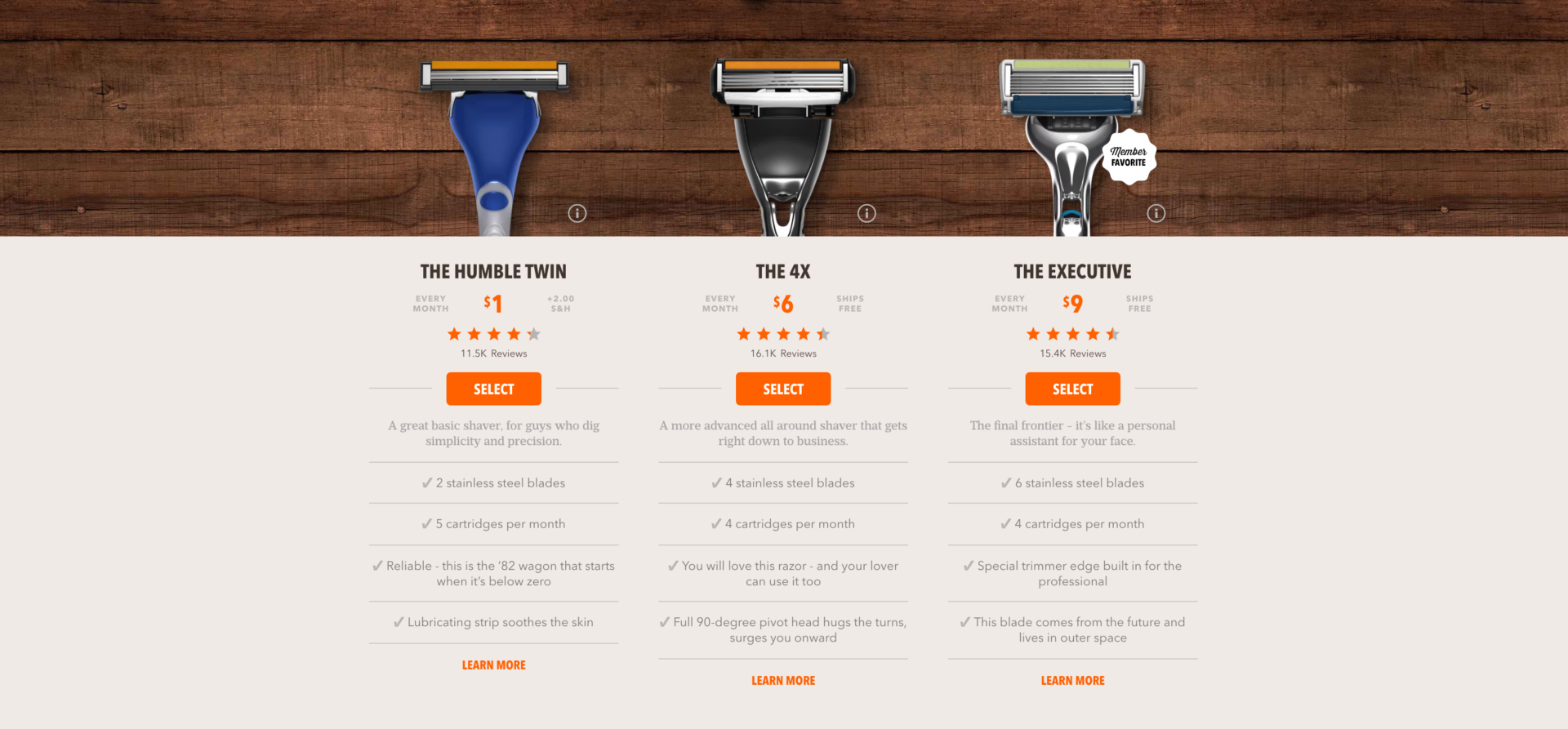
The key action points include ensuring a smooth subscription process, providing flexible customization options, and maintaining clear communication about subscription benefits and terms. This approach not only secures ongoing customer engagement but also positions your brand as a convenient and reliable choice in the busy lives of your customers. For businesses managing complex subscription models, SAP BRIM offers robust capabilities to streamline billing, revenue management, and customer lifecycle processes.
For example, Huel, a nutrition brand, offers a subscription model wherein they offer an additional discount to shoppers who opt for it.
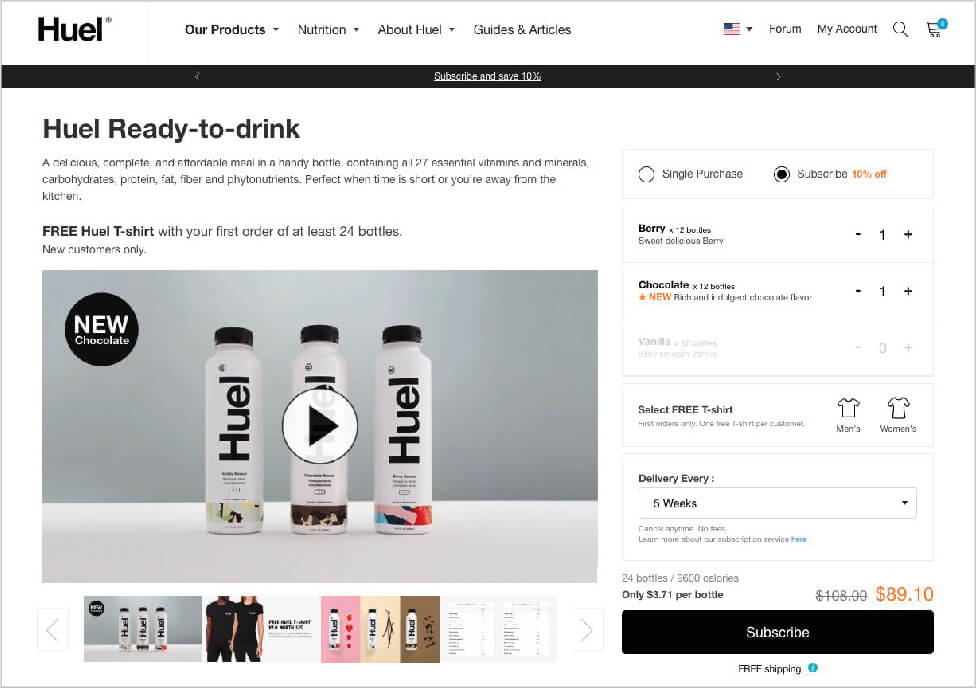
4. Personalize Customer Experiences
Personalization in e-commerce is not just a trend; it’s a necessity for boosting Customer Lifetime Value (CLTV). Statistics reveal that 80% of shoppers are more likely to buy from a brand that provides personalized experiences. Personalization involves tailoring the shopping journey to individual customer preferences and behaviors, enhancing engagement and loyalty.
To implement this, start by leveraging customer data to understand shopping habits, preferences, and history. Use this insight to customize product recommendations, email content, and special offers.
Start by integrating AI-powered tools for real-time personalization, segmenting your customer base for targeted marketing campaigns, and constantly refining your approach based on customer feedback and behavior. By providing a shopping experience that feels uniquely tailored to each customer, you not only increase the likelihood of repeat purchases but also create a deeper connection with your brand.
A stellar example of a brand that’s conquered personalized customer experiences is Amazon, which uses customers’ past browsing and purchase history to suggest relevant products, contributing significantly to its high customer retention rates.

5. Deliver Exceptional Customer Service
Optimizing customer service is pivotal in boosting Customer Lifetime Value (CLTV). A study by Salesforce reveals that 88% of customers are likely to make repeat purchases with companies that offer excellent customer service. In e-commerce, where direct customer interaction is limited, exceptional service becomes a key differentiator.
To enhance your customer service, focus on responsiveness and personalization. Implement a system for quick and effective responses to inquiries and issues. Utilize customer data to offer personalized services, such as addressing customers by name and referencing past interactions or purchases.
To excel in customer service, ensure your team is well-versed in effective communication and problem-solving, integrate CRM systems for efficient customer data management, and regularly seek feedback to continually enhance the quality of service. By making customer service a priority, you transform every interaction into an opportunity to deepen loyalty and trust, thereby positively influencing your CLTV.
Zappos, the online shoe and clothing retailer, is renowned for its customer service excellence. They have set a high standard in the industry by not only addressing customer issues promptly but also by creating memorable and personal customer interactions, leading to high customer loyalty and repeat business.
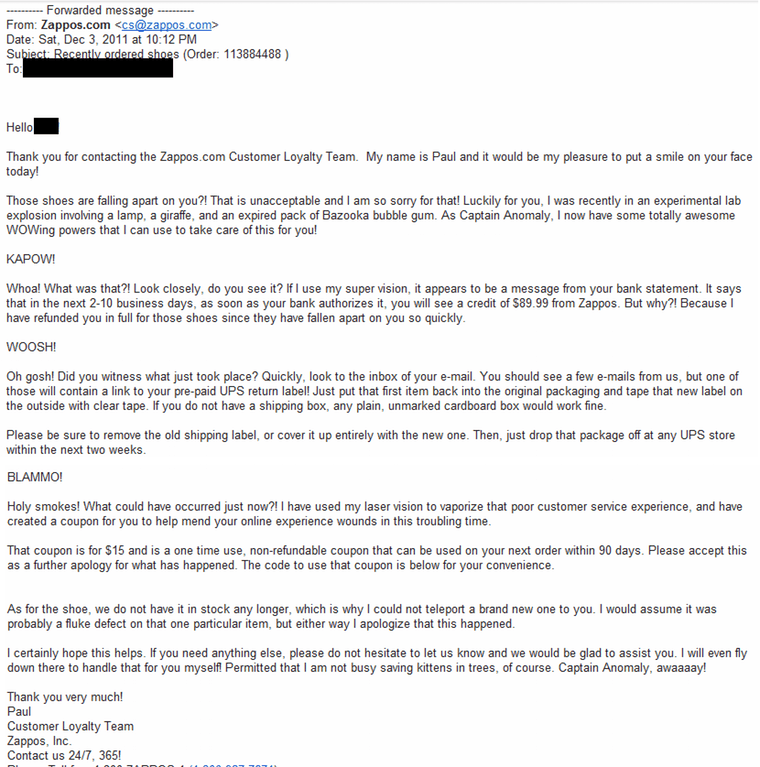
6. Utilize Feedback and Reviews
Feedback and reviews are your windows into how your customers perceive your products, what makes them tick, and what drives them to come back. In e-commerce, where direct interaction is limited, feedback becomes a valuable tool for understanding and catering to customer needs. In fact, a survey by Microsoft found that 77% of consumers view brands more favorably if they proactively invite and accept customer feedback.
Implement a system to collect and analyze customer feedback regularly. This can be through post-purchase surveys, review requests, or direct communication channels. Encourage customers to leave reviews and make it easy for them to do so. Analyze this feedback to identify areas for improvement in your products or services.
To build a solid feedback strategy, incorporate multiple touchpoints for gathering insights. For instance, use scannable QR codes on packaging to collect immediate feedback upon delivery. Follow up with emails, SMS, web push notifications, or even a phone call shortly after delivery and a few days later to gauge longer-term satisfaction and product usage.
Remember, feedback is different from asking for reviews or ratings. It’s about understanding the customer’s experience in depth. This comprehensive approach not only provides valuable insights for improving your products and services but also shows customers that you value their opinion and are committed to enhancing their experience with your brand.
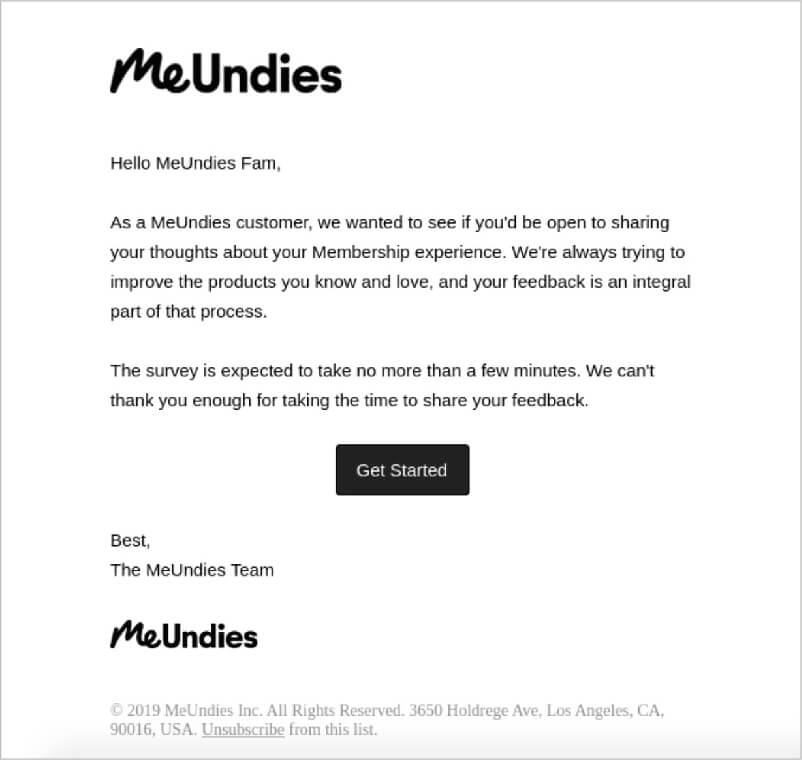
7. Engage Through Social Media
Building strong connections with your audience through social media is a crucial approach for enhancing Customer Lifetime Value (CLTV). Statistics indicate that brands actively engaging on social media enjoy a 20-40% increase in spending by customers. The key is to use these platforms not just for promotion but for genuine interaction and engagement.
Develop a social media strategy that includes regular posts, interactive content, and direct engagement with followers. Use these platforms to showcase new products, share behind-the-scenes content, and respond to customer comments and messages. This two-way interaction helps build a community around your brand and fosters loyalty.
To maximize the impact of your social media presence, ensure that your content is relevant, engaging, and aligned with your brand values. Monitor your social media metrics to understand what resonates with your audience and adjust your strategy accordingly. By actively engaging with your customers on social media, you create a more personalized and connected brand experience, encouraging repeat business and increasing CLTV.
Nike is a prime example of effective social media engagement. They don’t just promote their products; they engage in conversations, highlight customer stories, and create interactive campaigns, making their followers feel heard and connected to the brand.
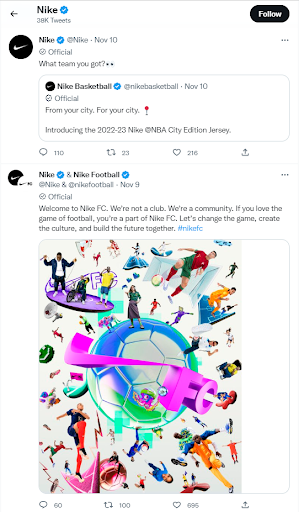
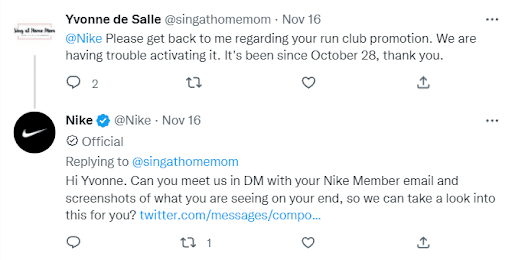
8. Leverage Multi-Channel Marketing
Multi-channel marketing empowers you to connect with your customers across various channels, amplifying your platform engagement. It also provides insights into your customers’ channel preferences and their behavior on different platforms.
In today’s digital landscape, customers no longer interact with brands through a single channel; instead, they exhibit multi-screen, multi-channel behavior. Channels such as Email, Web Push, SMS, WhatsApp, Mobile & Web Push offer diverse opportunities to engage with your customers. Whether it’s addressing cart abandonment, cross-selling, upselling, or providing product recommendations, these channels enable you to reach your audience effectively.
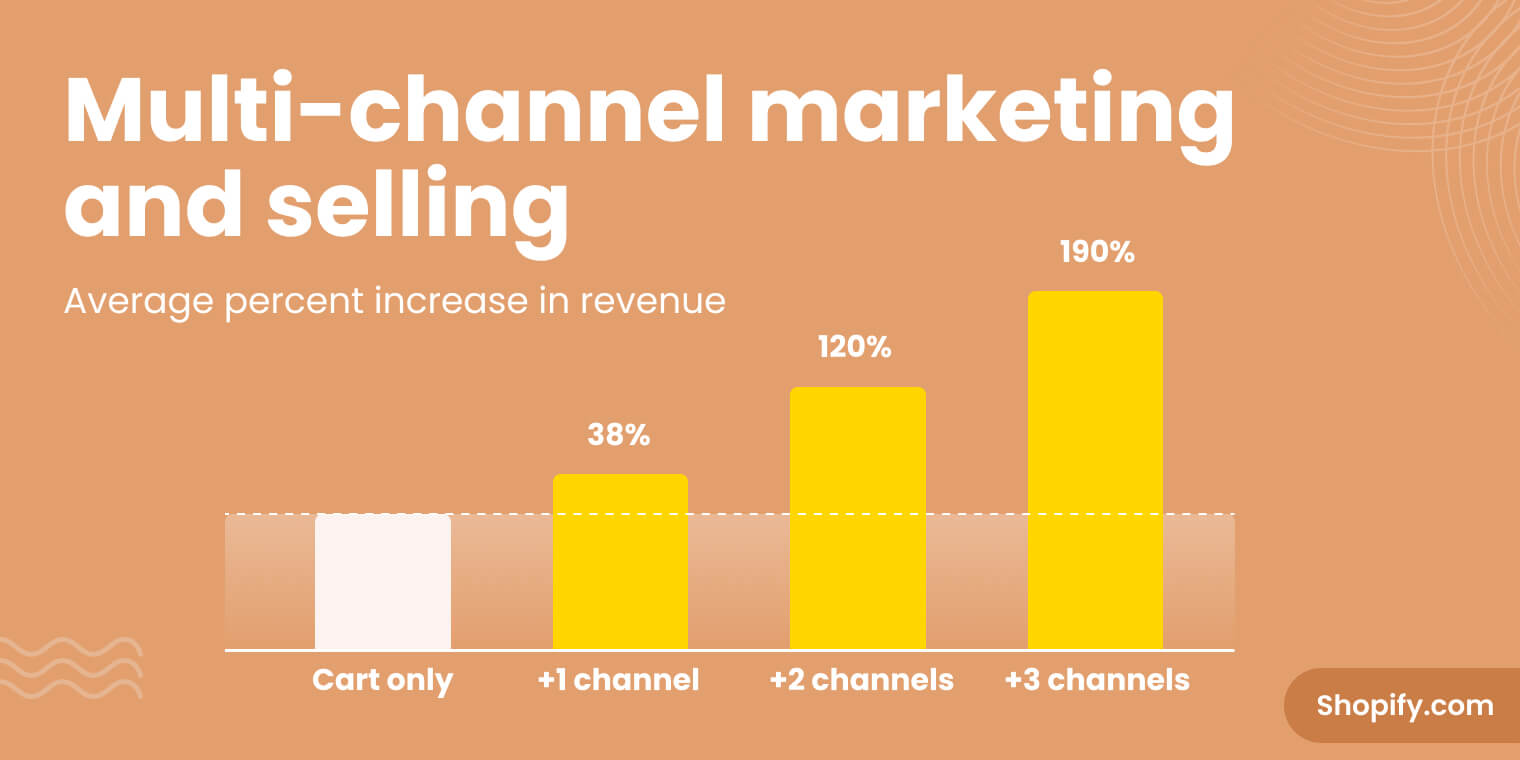
The way you approach your customers can significantly influence whether they choose to interact with your brand again. Rather than sending generic weekly newsletters, focus on personalizing your email campaigns. Tailor your messages based on the customer’s buying journey. A first-time buyer should be encouraged to share more details or create a wishlist, while a repeat buyer should be nudged towards joining your loyalty program.
An excellent illustration of multi-channel marketing comes from global e-commerce giant Amazon. They seamlessly integrate multiple channels, including email, mobile app notifications, and website recommendations. For instance, if you’ve browsed a product on their website but didn’t make a purchase, you may receive a personalized email reminder. Amazon’s multi-channel approach keeps customers engaged and encourages them to return for additional purchases.
Ready to boost your ecommerce brand’s CLTV?
Increasing CLTV is not a one-size-fits-all endeavor. It demands continuous effort and adaptability to changing customer preferences and market dynamics.
By implementing these actionable strategies, you can not only increase CLTV but also build a more loyal and engaged customer base, which is essential for long-term success in e-commerce.
Keep in mind that the key is to evolve alongside your customers, consistently exploring innovative approaches to enhance their shopping journey and deliver value.
About the author
This post was contributed by Appstle, a A SaaS business based in Silicon Valley (US) that powers e-commerce merchants across all sizes, to grow their customer loyalty and recurring revenue, and increase their share of customers’ wallets.
